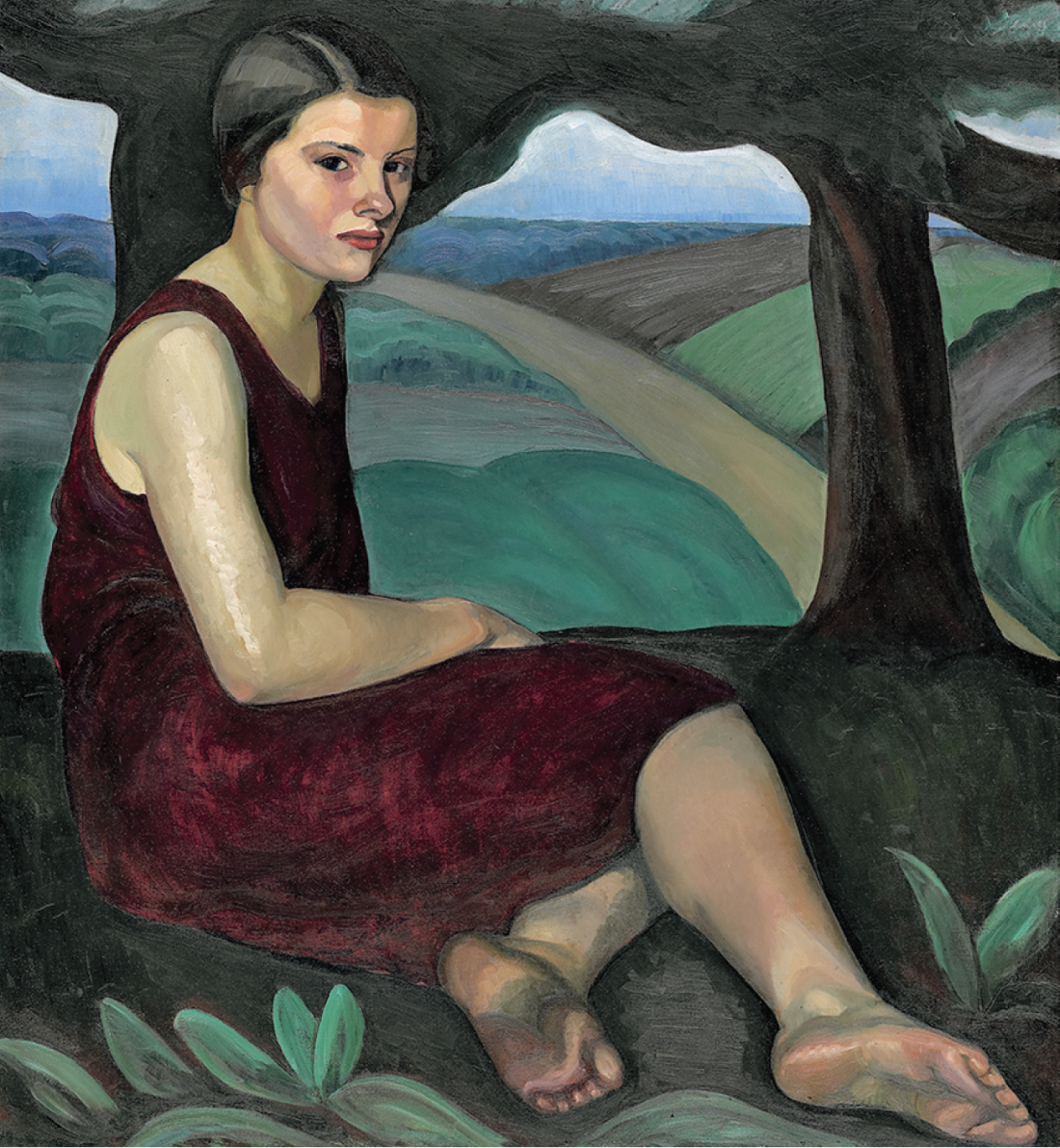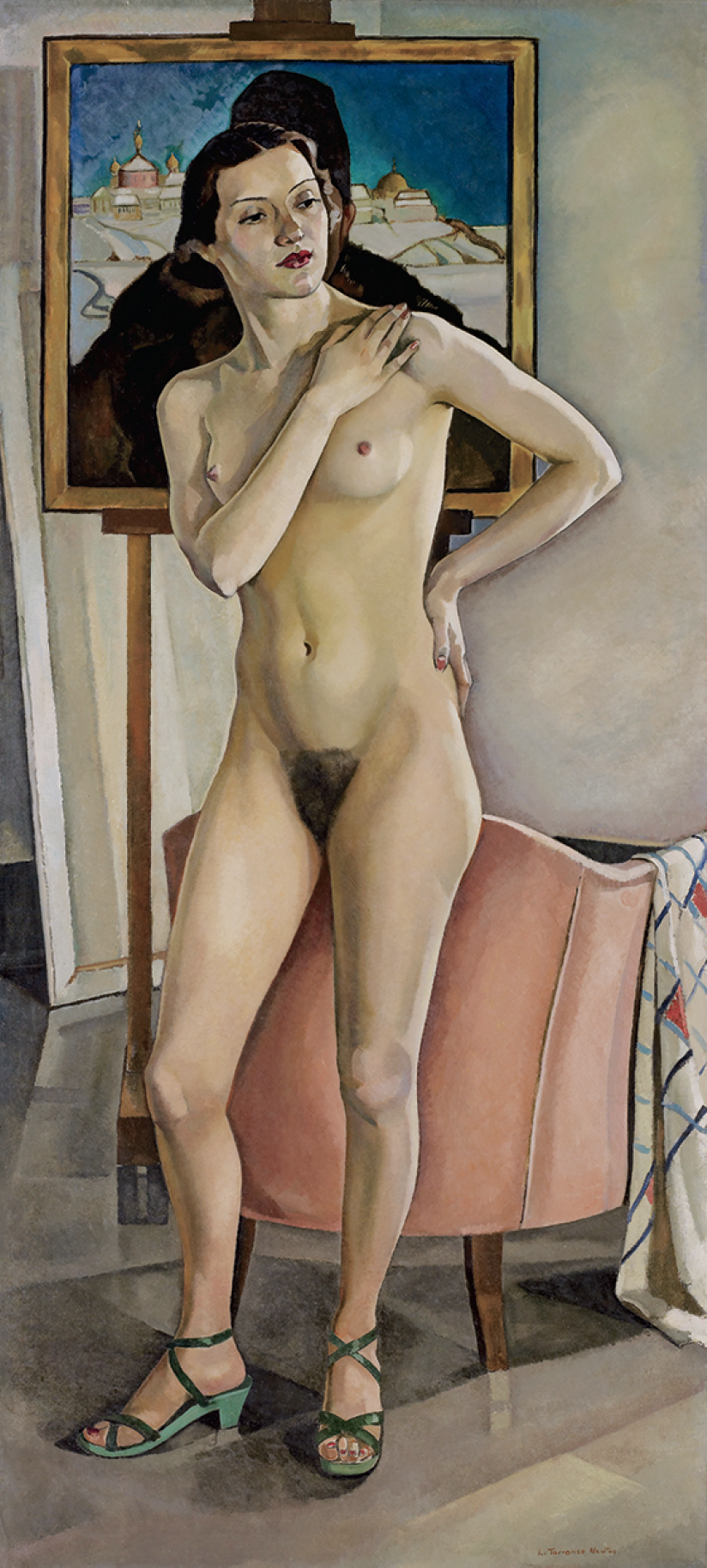“1920s Modernism in Montreal: The Beaver Hall Group”
This terrifically engaging and capacious exhibition of works by members of The Beaver Hall Group presented viewers with an unprecedented constellation of art stars who all shared Montreal as their firmament of Modernist genesis in the 1920s.
While the curators attempt to expose as empty myth the widespread belief that it was a women’s group—they correctly point out that as many men as women contributed to the fame and fortune of the group, their numbers almost evenly split—a still more radiant and irrefutable truth emerged. The work of the women ruled in this show. Edwin Holgate is surely a significant male voice, but the curatorial historicist understanding is undermined, if not rendered moot, by the magisterial work of Prudence Heward, who effortlessly commanded the floor here.
Indeed, if there is a shining star in this show, it is Heward, who lived and worked in her studio on the upper floor of the family home on downtown Peel Street. It is no surprise that her paintings grace the covers of all Beaver Hall publications, including this exhibition’s mammoth catalogue, and even stamps recently issued by Canada Post.
Some of her most compelling canvases are included. At the Theatre (a mainstay of the museum’s permanent collection) never loses its elegant and deft mien. Heward had a rare gift for extracting from, or rather investing in the real individuality of her female subjects without resorting to the usual aesthetics of an overly patinated pancake make-up overhaul. A sense of fierce determination, self-possession and spiritual strength abides.

Prudence Heward, Girl on a Hill, 1928, oil on canvas, 101.8 cm x 94.6 cm. Photography: NGC. Courtesy National Gallery of Canada, Ottawa, and the Montreal Museum of Fine Arts.
At the Theatre, 1928, is particularly interesting in that the two young women depicted are viewed from behind, their faces mostly hidden from us as they wait for the curtain to rise above the proscenium arch. That in no way lessens the sense of expectancy and avowal of the painting as a radical portrait of two women of their time unaccompanied by men. It is a work of inordinate depth. In Girl on a Hill, 1928, Montreal dancer Louise McLea is depicted sitting alone in a country landscape, and the gripping punctum is her bare feet with their soiled soles, which add a gritty realism of earthy industry to a portrait suffused with the considerable powers of empathy of a latter-day Nicolas Poussin. In Girl Under a Tree, a life-sized nude from 1931, the painter celebrates the curves of her subject with a frank honesty undreamt of by Giorgione.
“I once asked old AY [AY Jackson, a founder of the group and member of the Group of Seven] why my Aunt Pru [Prudence Heward] was excluded from the Group of Seven,” recalled her nephew, the late Heward Grafftey. “‘Well, I guess we liked our brandy and cigars too much,’ he replied. He knew there was a prejudice against women artists.” That prejudice, understood as synonymous with misogynistic envy, is destroyed in this exhibition—and with real panache.
Lilias Torrance Newton’s portraits have an incisive slant and deep psychological insight second only to Heward’s own. Her unforgiving, Socratically honest portrait of her friend Prudence is a high point of a show replete with high points. Her Nude in the Studio is ambitious, monumental—and adamantly unorthodox. In 1933, the artist submitted it to a Canadian Group exhibition and the then-Art Gallery of Toronto refused to include it because they found that the subject’s open-toed shoes rendered it offensive if not obscene. This seems laughable now but it is still a radical painting on altogether different grounds.
Kathleen “Kay” Moir Morris, despite a crippling congenital nervous disorder that affected her speech and induced violent spasms, painted like an angel unhindered by such impediments, and the paintings exhibited here have an integrity and uncanny intuitive finesse second only to those of David Milne.

Lilias Torrance Newton, Nude in the Studio, 1933, oil on canvas, 203.2 x 91.5 cm. Collection A.K. Prakash. Estate of Lilias Torrance Newton. Photography: Thomas Moore. © National Gallery of Canada.
Also of note are Emily Coonan’s wonderful and endearing portraits of young girls in armchairs. One such work entitled Girl and Cat, 1920, is a quiet standout, with the sitting girl’s right arm protectively tucked under the cat’s jaw like a worthy lintel, and her expression is one of haunting melancholy. Hailed by critics as a “born colourist,” and certainly one of the leading painters of the Beaver Hall Group and a loner by choice and temperament within it, her paintings are luminous and wholly human. One can see why she was such an admirer of the work of James Wilson Morrice.
Many of these painters employed chroma in unusually scintillating and unexpected fashion, such as the colourist Anne Savage, whose Lake Wonish (for Don) is a delicate marvel of fluid brushstroking with its enticing mauve, purple and pink palette. The lush chromatic lyricism of Sarah Robertson is also well represented. Robertson and Prudence Heward were close friends for more than three decades. Heward often showed her paintings to Robertson before anyone else, and valued her counsel.
Two notable exceptions here to the “women rule” rule were Adrien Hébert and John Johnstone. Hébert’s work still looks breathtakingly fresh and contemporary in his huge harbour paintings and downtown street views, such as the stone façade of the Archambault music store which still stands on the corner of Berri and Sainte-Catherine streets. With streetcars and hordes of bustling shoppers treated in hugely original outsized compositions, these works afford a rare epiphany in their views of the Montreal urban centre in the late 1920s. Johnstone, sadly lost to alcoholism at an early age, is known for his small-format and decidedly compelling oil-on-panel works, here the subject of laudably reparative scholarly spadework. They show a great internal sense of stillness, duration and timelessness, as though executed on the numinous threshold of the seen and the unseen. His paintings of Montreal’s Chinatown neighbourhood and Bonsecours Market are examples and we are given the opportunity to reacquaint ourselves with the work of a great and still undervalued Canadian painter. ❚
“1920s Modernism in Montreal: The Beaver Hall Group” was exhibited at the Montreal Museum of Fine Arts, Montreal, from October 24, 2015 to January 31, 2016. It will be exhibited at the Art Gallery of Hamilton from February 20 to May 8, 2016, the Art Gallery of Windsor from June 24 to October 2, 2016 and the Glenbow Museum, Calgary, from October 22, 2016 to January 29, 2017.
James D Campbell is a writer and curator in Montreal who is a frequent contributor to Border Crossings.

